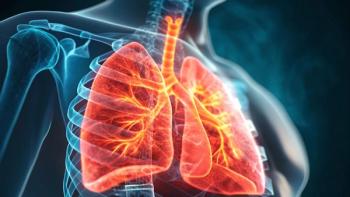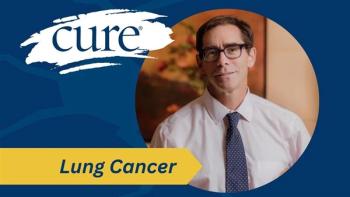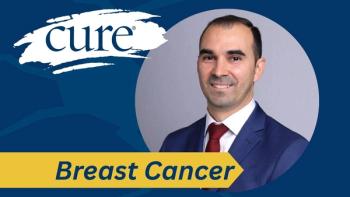
Breast Cancer Awareness Month Spotlights Reconstruction Access

Key Takeaways
- Breast Cancer Awareness Month is vital for initiating conversations about breast cancer and treatment among patients, families, and caregivers.
- The OnPlant, a 3D-printed silicone breast model, allows patients to experience augmentation before surgery, addressing a significant patient need.
Dr. Evan Garfein discussed OnPlant, a 3D breast model, and stressed timely reconstructive care for all patients during Breast Cancer Awareness Month.
Dr. Evan Garfein, chief of plastic and reconstructive surgery at Montefiore, highlighted Breast Cancer Awareness Month as a chance to talk about breast cancer and treatment.
He discussed the OnPlant, a 3D-printed silicone breast model that lets patients experience the look and feel of augmentation before surgery. Garfein also addressed persistent disparities in reconstruction access, calling for timely reconstructive services for all patients regardless of ZIP code.
CURE: What is the importance of recognizing this awareness month for patients, families, and caregivers?
Garfein: Well, it’s super important, obviously. Breast cancer touches everyone; you can’t find someone who doesn’t have a friend, relative, or coworker who’s been affected by this disease. So, one thing breast cancer doesn’t lack, unfortunately, is the imperative to talk about it. Breast Cancer Awareness Month has always been powerful. It’s a great opportunity to energize people to start a conversation with a friend, loved one, or relative about breast cancer and treatment.
What inspired the development of the OnPlant, and how does it differ from other traditional post-mastectomy options for patients?
I was taught early in my plastic surgery training that the divide between cosmetic (or aesthetic) surgery and reconstructive surgery is really artificial. To be good at reconstructive surgery, you have to follow aesthetic principles, and to be great at cosmetic surgery, you have to understand reconstruction, how the body is put together so you can enhance, augment, or rebuild it.
The OnPlant is something I developed with my partner, Dr. Oren Tepper, at our aesthetic office at 497 Greenwich Street. We created it to solve a problem we were seeing in our cosmetic breast patients who were seeking augmentation. As most people know, one of the biggest early questions is: “What size implant should I get?”
We now have great simulation tools to help patients visualize how a given implant will look on their bodies. We use 3D photogrammetry by taking a picture, converting it into a 3D image, and virtually placing implants under or over the muscle to show realistic results. It’s an incredibly powerful tool.
But even with that technology, many patients would say, “This is helpful, but I want to feel what the augmented breast will be like. I want to put on clothes, see how it looks in a bathing suit or lingerie.” The simulations couldn’t provide that. For years, the best we could offer was a bag of rice or an implant in a larger bra. These didn’t accurately capture the shape or feel of an augmented breast.
One day, while speaking with a patient right before surgery, she told me, “I’m comfortable with the size we chose, but I wish I could live with it for a week first.” After that conversation, Oren and I realized this was a real need. We partnered with 3D printing experts to develop the OnPlant, a silicone, 3D-printed augmented breast that matches not just the implant size, but how it would look and feel under or over the muscle on an individual’s chest. This lets patients take it home and live with it for a day, a week, or a month. It’s been incredibly useful.
What are the key barriers, and how can they be addressed?
This is an issue that’s really important to me. The origin of the law addressing this came from a conversation I had with a good friend of mine from college, Gifford Miller, who was then the Speaker of the New York City Council. This was around 2008, when I was joining Montefiore.
Montefiore is a large academic medical center that provides advanced care to people in some of the poorest ZIP codes in America, regardless of insurance status. I told Gifford that one of my interests was the disparity in reconstruction rates after mastectomy. Studies from the 1990s and early 2000s showed that if you were wealthy, white, and college-educated, you were far more likely to receive reconstruction after mastectomy. But if you were poor, Black, and lived in underserved areas, reconstruction rates were shockingly low, sometimes in the single digits.
A federal law (the Women’s Health and Cancer Rights Act, authored by New York Senator Al D’Amato) was supposed to address this. It required all payers, public and private, to cover reconstruction after mastectomy. The hope was that this would eliminate the disparity, but disappointingly, it didn’t. Researchers found that many women didn’t even know reconstruction was an option.
I told Gifford I planned to do community outreach — go to churches, salons, anywhere I could educate people. He told me, “That’ll never work. Make it a law.” So, with Montefiore’s help, we worked with lawmakers in Albany, and it became law in New York that women must be informed of their reconstruction options.
But even now, in New York and other states that have adopted similar laws, the disparity persists. Why? Like most complex problems, there are multiple reasons. One of the hardest to solve is access to plastic surgeons.
In wealthier ZIP codes, hospitals have multiple breast surgeons and plastic surgeons who can see patients right away, coordinate surgery, and offer a full range of reconstruction options. But in poorer areas, there might be only one or two surgeons (or none) who can perform reconstruction.
If a breast surgeon says, “We can do your mastectomy next week, but you’ll have to wait seven weeks to see a plastic surgeon,” the patient understandably chooses to treat the cancer first. The imperative is to get rid of the cancer.
To fix this, I believe all hospitals that treat breast cancer should be required to provide timely reconstructive services, just as they would for heart surgery or trauma care. You can’t treat heart disease without a heart surgeon or trauma without a neurosurgeon. We should hold breast cancer care to the same standard. Whether it’s a large Manhattan hospital or a city hospital in the Bronx, every patient deserves access to the same suite of reconstructive options. We’re not there yet, but we should be.
Transcript has been edited for clarity and conciseness.
For more news on cancer updates, research and education,




